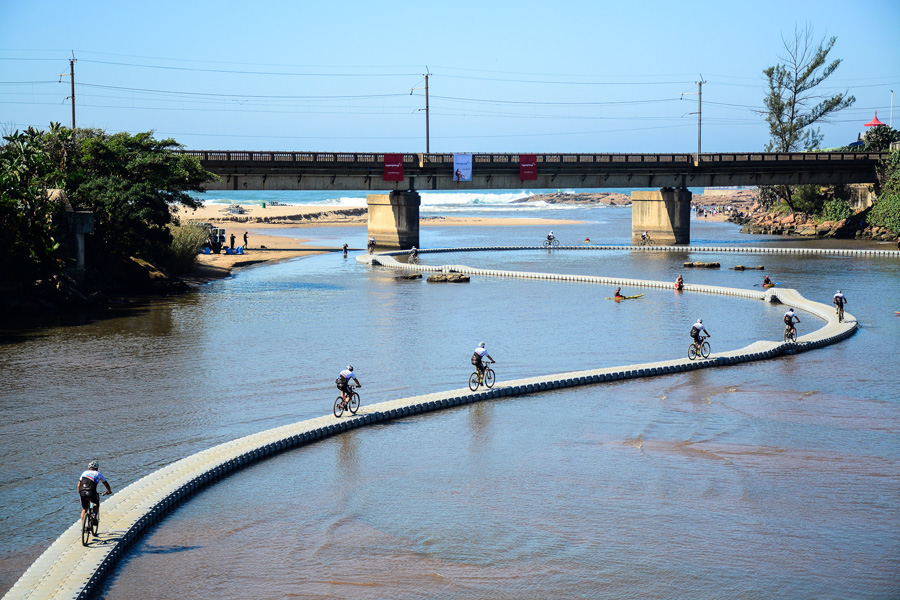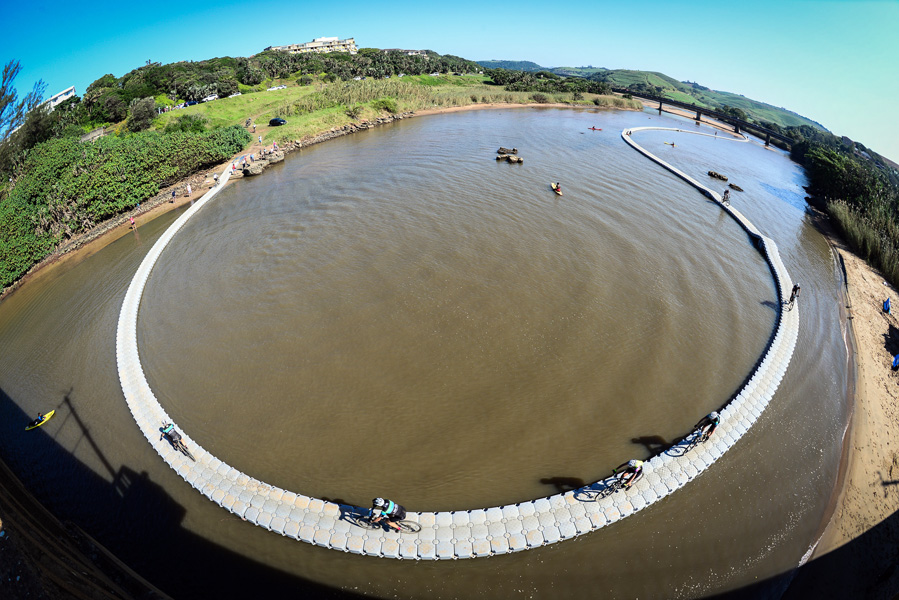There are more and more floating bridges taking riders across rivers, dams and river mouths in South African races and also on some trails. Many are hesitant to tackle floating bridges, but you needn’t be. Here’s how to conquer them with confidence.
By Sean Badenhorst
Photos by Kevin Sawyer/KAP Sani2c

First of all, know this: A floating bridge is stable enough to hold the weight of you and your bike – and a few others ahead of and behind you. Yes, it will submerge slightly as you roll along it, but won’t sink to the bottom of the river or dam. It’s just a temporary, slight submersion due to your weight on it.
Also, floating bridges do move laterally a little at times (from wind or current), but it’s such a small movement and it isn’t going to change the course of the bridge.

Once you have accepted these facts, you need to do this:
Don’t tense up when you approach a bridge. Remember, it’s at least the same width as a singletrack trail, but usually wider. If those planks were flat on the earth, you’d ride along and over them without even flinching. Add some water on either side and suddenly you tense up. Don’t! Stay relaxed and follow these key steps:
- Look ahead to where you want to go. Don’t look off the edge of the bridge or you will go of the edge of the bridge. Look a few metres ahead because that is all that counts. Ignore everything around you and focus for those few seconds, or minutes, on crossing that floating bridge.
- Select a gear before you hit the bridge that’s appropriate to either keep pedalling over the bridge or to pedal off it on the other side. You shouldn’t go too fast over floating bridges as you risk the chance of your tyres losing traction. Ride at a moderate speed (8-15kph) for optimal stability.
- Try stay in the middle of the bridge where it’s most stable. How? Look ahead of you at the middle of the bridge and that’s exactly where your wheels will go… Remember, look ahead 10 metres for every 10kph your are moving. Never look down at your front wheel.
- Stay seated. You can pedal more smoothly if you’re seated. Besides, floating bridges are generally flat, so standing isn’t necessary.

Very important: Commit fully to the bridge crossing before you hit the bridge. If you have any doubts during the crossing, you will probably fall into the water.
Want to improve your confidence or speed? Book one of our TREAD Skills Clinics near you. Info and booking here: treadskills.co.za

All rights reserved


